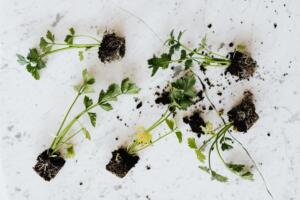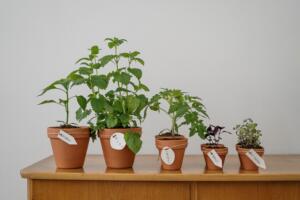 There are many reasons why people chose to grow kitchen herb garden. They produce organic and healthy harvests and are cheap as well. They are easy to grow and all they need is sunlight and warmth. In case your kitchen lacks direct sunlight, you might place your herb in other rooms as well. Now, we’re going to give you a brief explanation on how to start your own kitchen herb garden.
There are many reasons why people chose to grow kitchen herb garden. They produce organic and healthy harvests and are cheap as well. They are easy to grow and all they need is sunlight and warmth. In case your kitchen lacks direct sunlight, you might place your herb in other rooms as well. Now, we’re going to give you a brief explanation on how to start your own kitchen herb garden.
The first step of growing kitchen herbs is deciding what plants we want to grow. The answer is simple; start with whatever you prefer to eat. Search on internet to find out what seeds or seedlings produce your favorite dish, and buy them at your local gardener.
The second step is to choose whether you need seeds or seedlings. You can buy seed packets, or buy herb seedling from local shops. If your choice is seedlings, make sure that the plant is not rootbound by checking the plant’s bottom.
Third step is to choose the seeds/seedlings that you want to buy. The most used seeds are Basil, Chives, Cilantro, Mint, Oregano, Parsley, etc. Ask your local gardener or look up online which one would be a better choice to produce the harvests you desire.
What you’ll need:
Soil: Mix soil, moss, and perlite to produce a high quality soil for your herb garden. You can also buy this mixed soil in most garden stores for a reasonable price.
 Containers: You will need lots of containers to put your herbs in. Look in your house if you have some unused containers. If not, check the garden stores, they will definitely have them. When you find them, create drainage holes in its sides before planting seeds/seedling.
Containers: You will need lots of containers to put your herbs in. Look in your house if you have some unused containers. If not, check the garden stores, they will definitely have them. When you find them, create drainage holes in its sides before planting seeds/seedling.
Sunlight: The most important factor in growing herb garden is providing enough sunlight for them to be able to grow. They must be exposed to sun between four to six hours every day. Less light will most likely prevent growth.
Now that you have everything that you need, let’s get started.
- Place seeds in water for about two to four hours before planting them in soil. This will fill them with water they will struggle to find when they initially get planted.
- Fill all containers with soil up to one inch below the rim. Plant seeds approximately one fourth of inch below the top of the soil. Putting them lower will most likely prevent them from ever reaching the surface whereas putting them higher will most likely decrease the amount of nutrients they can take.
- Place the container in a place out of direct sun light until it starts to grow and water it often. Note however, that different plants require different amounts of water per day.
- When you see the herb growing out, move the container to an area with sunlight exposure between four to six hours a day. Continue to water them accordingly.
- Large numbers of seeds growing in one container is not a good thing; it is actually dangerous for them. They will all feed from the same soil and will most likely lack nutrition. Thus, if several seeds grow, remove a few of them to allow the other seeds to grow. Be careful while you are removing the seeds, you might accidentally damage other seeds as well.
- If planting seedlings, bury the roots in the soil and put it immediately in the sunny area.
- When herbs are grown, harvest them. Leave the sprigs of every herb so they will grow back again so you will have herbs in the future as well.
By following these steps, you will create a kitchen herb garden and start growing your own healthy food.

